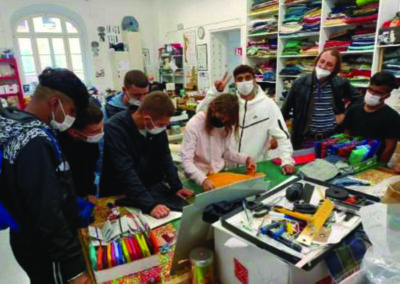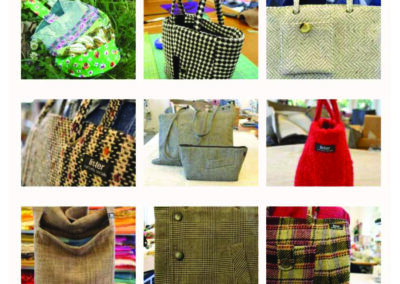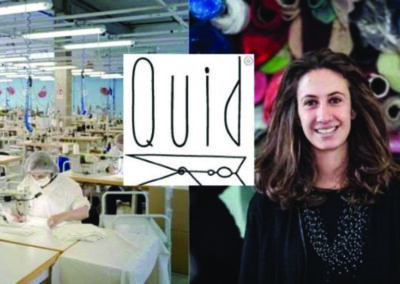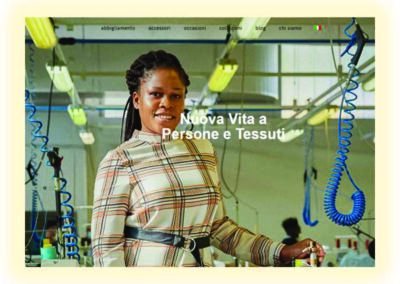Textile recycling
Country Situation – Italy
Faced with the scenario of a sector, the Textile and fashion industry, that represents the second most polluting industry in the world (after the oil industry) and due to the waste of resources – especially water – the issue of textile waste recovery becomes fundamental.
In recent years, fast fashion has become more and more widespread, leading to a sharp increase in the quantity of garments produced but also in the amount of waste, consisting mainly of synthetic materials, which now account for 60% of the textile fibres placed on the market (polyester is the most widely used fibre). In the textile waste cycle, only 1% of the world’s waste is recovered in the form of new clothes, one reason why textile waste has also become an important part of the European Commission’s New Deal, which invites Member States to implement separate collection of Textiles from 1 January 2025 as one of the sustainable targets of the circular economy directives.
Situation in Italy
Since January 1, 2022, the obligation to separate textile waste has been in force in all municipalities in Italy.
This is the result of the Italian transposition of the directives of the circular economy action plan (CEAP), which brought forward the starting point by three years, compared to 2025 established at EU level.
https://environment.ec.europa.eu/strategy/circular-economy-actionplan_en
The relevance of textiles in Europe is demonstrated by the fact that the 2020 European Action Plan on the circular economy has identified Textile as one of the priority sectors, announcing the publication of a dedicated Strategy.
The textile waste collection chain
The exclusive responsibility for the collection of urban waste in Italy is entrusted by law to the unicipalities, to the Consortia of Municipalities or, by delegation of the latter, to the public service managers, who in turn entrust the collection of this fraction of urban waste through a public tender to a company with the necessary authorisations to manage the collection.
It is an articulated system of actors and channels that deals with the second life of used clothes, represented on the one hand by the separate collection of the textile fraction, identified by the EWC (European Waste Code) codes 20.01.10 and 20.01.11, and which in practice provides for collection in the appropriate containers, after a selection phase, the passage to the re-use, recycling or disposal channel.
It is also possible to give a second life to used clothing through alternative channels to separate waste collection: art. 14 of Law 166 of 2016 promotes the transfer to charitable associations that distribute them to those in need, clothes that are therefore not considered as waste, but as a gift.
In following, a few figures taken from the latest report Italy of recycling 2021 by the Foundation for Sustainable Development, a cross-section of the circularity of the supply chain: compared to 2010, the number of Italian companies that deal with the repair of textile articles increased by 162%. In 2019 companies operating in the textile sector, produced 480.000 tons of textile.
Compared to 2010, an increase of 39.5%. Due to the tendency of “fast fashion”, the growth rate of textile waste from urban collection has been around 228%. In 2019, 46% of textile waste has been sent for material recovery, while 11% went to disposal. Other 43% is used for intermediate activities, such as pre-treatment and storage, an activity typically carried out by Social Cooperatives that take care of the collection, in agreement with the Municipalities.
Positive effects of the collection and valorisation of the textile fraction of municipal waste:
- Environmental. It prolongs the life of products and materials, reducing the consumption of raw materials and energy to produce new ones.
- Economic. The costs of collection are not borne by citizens; public administrations save the costs of disposing of approximately 130.000 tonnes of waste per year, which at current prices can be estimated at around 2.5 million euros per year.
- Social. An activity, especially with regard to collection, largely carried out by social cooperatives that guarantee the employment of personnel from disadvantaged groups.
Challenges and solutions
On the one hand, there is a need for an overall reorganisation of the system that can only be implemented with targeted government intervention, and on the other hand, total transparency and clarity towards the public.
Several studies suggest that second-hand goods will outstrip fast fashion. And this is a positive forecast because having higher quality garments that last longer, even if they move on to new markets, is certainly better than continuing to churn out very low-quality products that are not very durable and have dangerous chemical components.
- It will be necessary to define rules to support the Extended Producer Responsibility (EPR) criterion (i.e. the rule, enshrined in Directive 851/2018, that the producer of a good is also responsible at the post-consumer stage, i.e. for its management once the good becomes waste).
- Another step that needs to be taken is to increase the points where waste can be delivered to make it easier for citizens.
- Recycling activities must take place in a widespread manner throughout the territory and recycling facilities must be expanded.
- The recovery of what is collected must be maximised and the quantities that end up being disposed of reduced. Today this is partly made difficult by fast fashion products made of materials that are not easily recyclable.
https://www.allianz-trade.com/it_IT/news-e-approfondimenti/trade-magazine/business-trends/textileinnovation/settore-moda-e-recupero-di-rifiuti-tessili.html
https://altreconomia.it/rifiuti-tessili-dal-primo-gennaio-2022-lobbligo-della-differenziata-senza-linee-guida/
https://www.ecomondo.com/blog/20917792/prevenzione-rifiuti-tessili
https://www.esg360.it/circular-economy/tessile-e-sostenibilita-la-soluzione-passa-attraverso-riciclo-e-riutilizzo-diabiti-dismessi/
https://www.fondazionesvilupposostenibile.org/italia-del-riciclo-2021/
Best practices
Lister Sartoria Sociale (Social Tailoring) https://www.listersartoriasociale.it/
A frequent picture during rainy and windy days (Bora): broken umbrellas thrown into bins or on the corners of the street and can have a new live. But not only, also jeans, ties, banner, sails…, are transformed by the workers (30% with vulnerabilities) of the Social Cooperative Lister.
Verona – QUID https://www.quidorg.it/
“New life for people and textiles”
Quid garments are born from recovered high quality fabrics.
Quid garments are handcrafted by women with a personal background of fragility.
Ethical fashion. Social innovation. Sustainable clothing. Secure payments. Eco-fashion fabrics.




